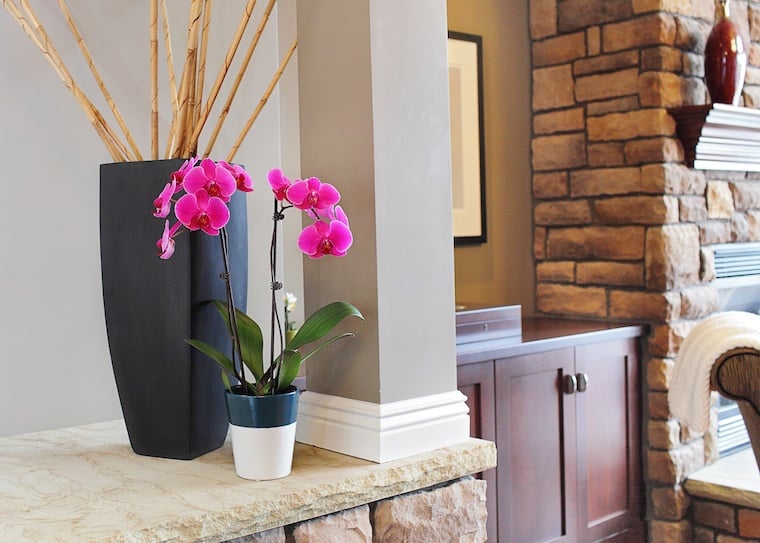
A friend or loved one gave you a houseplant as a holiday gift, which brings added pressure to take good care of it. How do I keep my indoor plant alive during winter?” you may ask, staring at your new plant friend in trepidation.
Many new plant parents either stick their heads in the sand by ignoring the plant in the hopes it will somehow thrive on its own or become helicopter parents who frequently douse it with water. Neither of these responses will help your plant, but with some easy winter indoor plant care practices, you can keep your plant alive and well throughout the colder months!
A Google search yields so much information on winter indoor plant care tips, you don’t know where to start. If you stick with these basic plant care tips, your plant should be just fine.
While much of this advice covers other houseplants, we’ll use Phalaenopsis orchids as examples. After all, Phals are our jam!
One of the biggest mistakes we see is overwatering. Don’t drown your plant! Most houseplants require watering when the soil becomes dry. Some plants, like succulents, tolerate dryness more than others.
Premium orchids require three ice cubes per week or one-quarter cup of water. The ice cube method allows water to slowly melt down into the media and eventually the roots rather than dumping all of the water on it at once.
Pro Tip: If you’re worried your plant is thirsty, check the leaves and the roots. Both should be plump and green. Dull leaves and grayish roots are a sign of dehydration.
Winter sun is lower on the horizon than summer sun, so as the amount of natural sunlight changes inside your home, you’ll want to adjust the location of your plants.
Most houseplants, such as orchids, anthuriums and money trees, prefer the indirect sunlight of our home’s windows while others do fine in shady corners. If you have more than one plant, make sure the plants needing sunlight get first dibs on those sunnier spots.
Pro Tip: If you have more than one sun lover, you can buy a tiered plant stand so both can enjoy those rays. Just don’t get them too close to the window as they can get sunburned, even in winter!
Many houseplants have tropical roots, which is why they do well indoors. They love some heat – but not too much – and humidity. A good general rule: The ideal temperature for indoor plants is the same as for humans: between 60-80 degrees Fahrenheit.
If you have heated air inside your home, it could dry out your plants. Consider adding a humidifier to the room so your plants don’t get dehydrated. You can also mist your plants with a spray bottle.
This also means keeping them away from vents. I know, most vents are near sunny windows, which is annoying to us plant lovers who don’t have great real estate for our indoor plants. Again, that multi-tiered plant stand can really help! It keeps it off the ground and further away from floor vents.
Pro Tip: Consider closing the vents near your plants!
Just like repotting, you only want to add fertilizer to plants that are resting since blooming plants don’t need fertilizer. You can do this in four easy steps:
Pro Tip: Think of the fertilizer as the week’s supply of water. For that reason, you should avoid watering on the weeks you fertilize your plant
If you have an orchid (or other houseplant) that is resting, meaning it has lost its blooms and buds, this is a great time to repot it. Avoid repotting during the active phase as this can cause your orchid to lose its blooms prematurely!
Although they look delicate, orchids are hardy and are easy to repot. Take the orchid out of the current pot, trim the dead spikes and roots, add the orchid to the larger pot and add the orchid pot media to it. Easy peasy!
Pro Tip: Don’t let lack of supplies keep you from taking action. Get an orchid repotting kit to save time and effort.

Copyright Just Add Ice® Orchids 2023